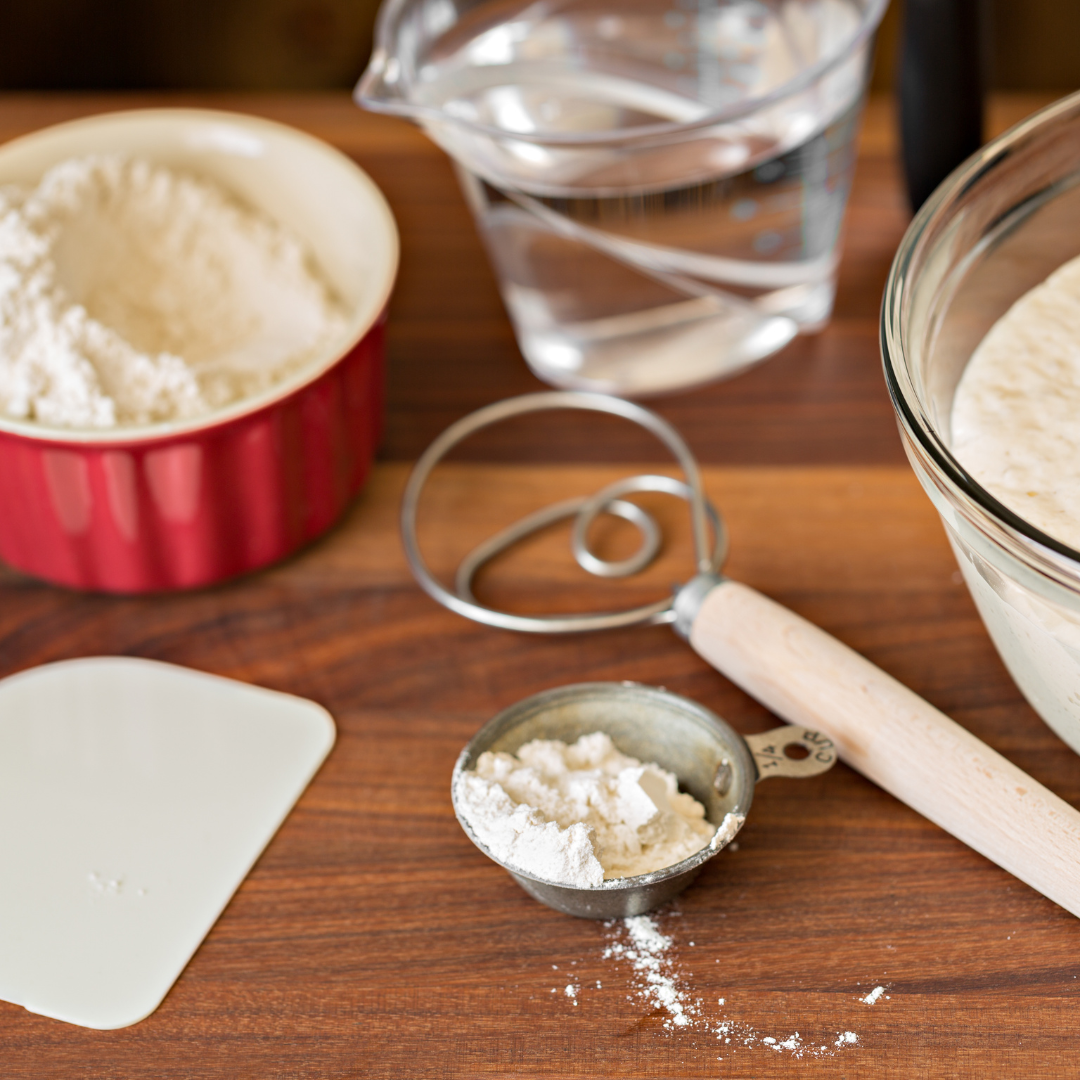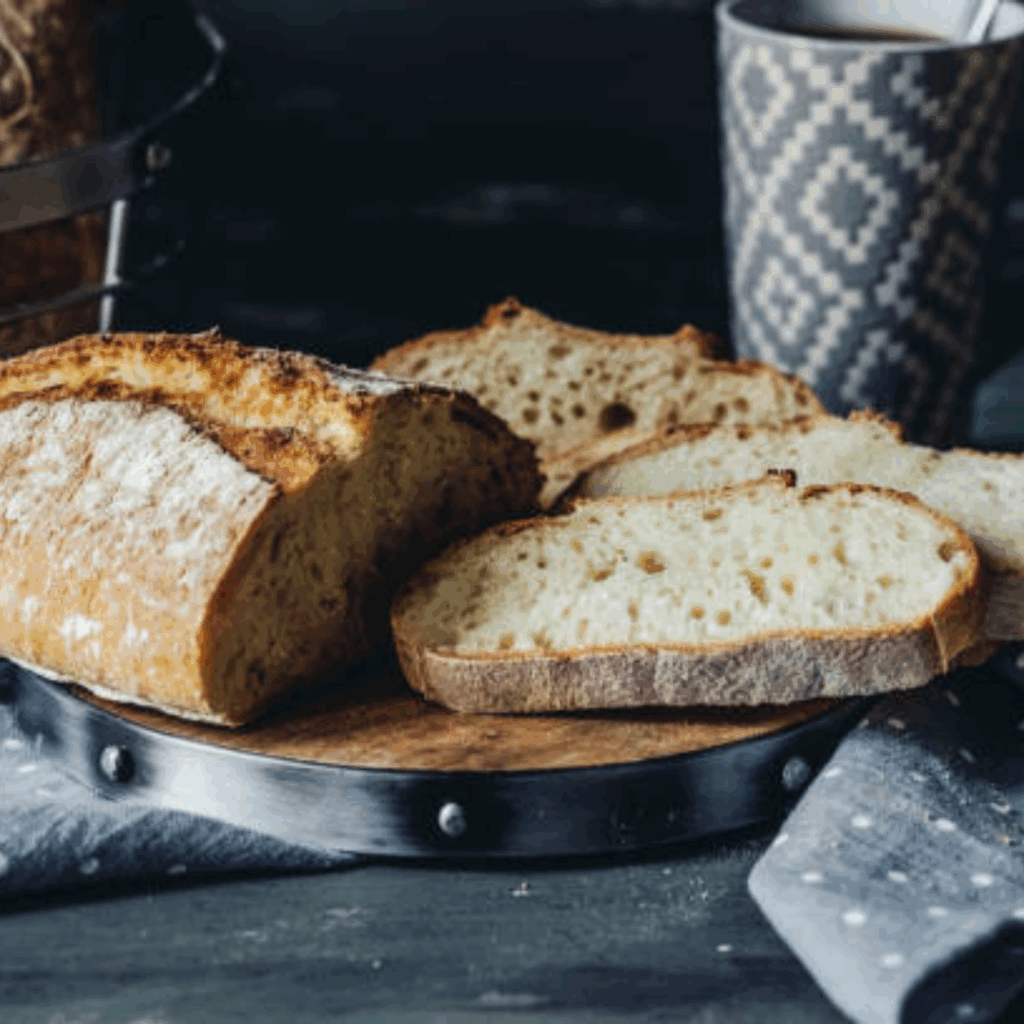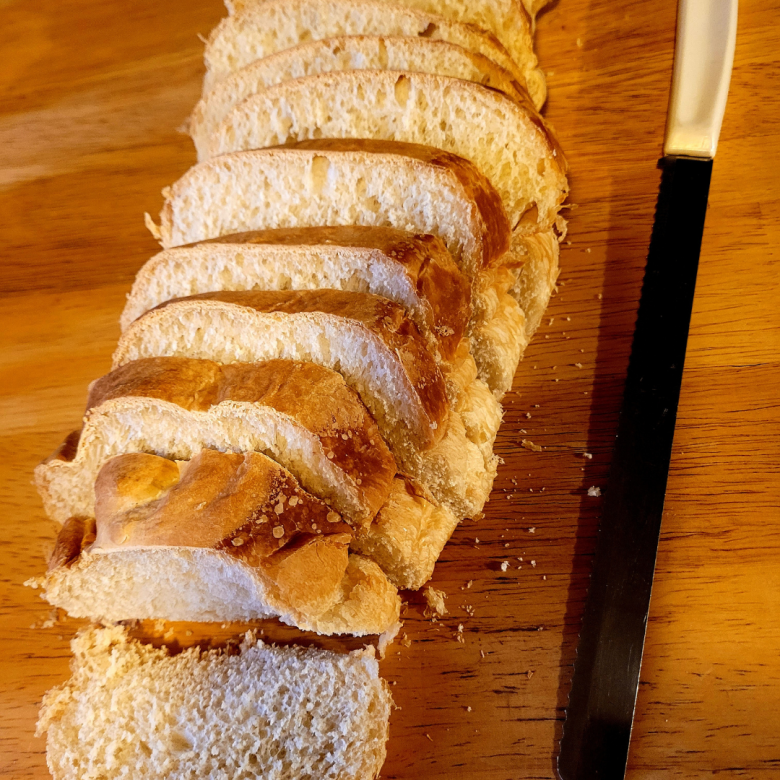Get started with sourdough baking the right way! Discover all the essential tools and ingredients you’ll need to make perfect sourdough bread at home—from a bubbly starter and sturdy Dutch oven to proofing baskets and kitchen scales. Whether you’re a beginner or seasoned baker, this guide covers everything you need for delicious, crusty sourdough loaves every time.
When I first started baking sourdough bread, I quickly realized it takes more than just flour and water—it’s about having the right tools and a bit of patience. Over the years, I’ve gathered a set of tried-and-true essentials that make the process smoother, cleaner, and more rewarding. In this post, I’ll walk you through everything you’ll need for sourdough bread baking, from maintaining your starter to baking that perfect golden loaf. Whether you’re just beginning your sourdough journey or looking to upgrade your setup, this list will help you bake like a pro right from your kitchen.
This is a pinnable post. Tap or hover over any image in this post to pin to your Pinterest Boards.

Sourdough Bread Baking Supplies
Some of these are not necessary, but nice to have!
1. Banneton Bread Proofing Basket Set – 9″ Round & 10″ Oval Rattan Baskets
A good banneton proofing basket is one of the best investments you can make as a home baker. These 9″ round and 10″ oval rattan baskets help your dough hold its shape during the final rise and create those beautiful flour rings that give sourdough loaves their rustic charm. The breathable rattan material wicks away excess moisture, encouraging a crisp crust while preventing the dough from sticking. This set is perfect for anyone who loves variety—you can proof a traditional round loaf one day and a long oval the next. Plus, most sets come with liners, a dough scraper, and a scoring lame, giving you everything you need to take your sourdough from sticky dough to bakery-worthy bread.
2. Sourdough Starter Kit with Cotton Rope Banneton Basket & Starter Jar
This all-in-one sourdough starter kit is perfect for home bakers who want to dive straight into bread-making without hunting down separate tools. It includes a cotton rope banneton proofing basket to help your dough keep its shape, a starter jar to cultivate your bubbly sourdough starter, and essential tools for scoring and handling dough. Everything is designed for ease of use, making it a fantastic gift for beginner bakers or anyone who loves baking from scratch. With this kit, you can create beautifully shaped, artisan-style sourdough loaves at home, complete with a crisp crust and soft, airy interior.
3. Extra Large Folding Dough Proofing Box with Heating & Temperature Control
For bakers who want consistent results every time, an extra-large folding dough proofing box is a game-changer. With 3-sided heating, adjustable temperature control from 50–130℉, and a 24-hour timer with beep alert, this box ensures your sourdough, pizza dough, or even yogurt cultures rise perfectly every time. Its spacious interior accommodates multiple loaves at once, while the foldable design and included storage bag make it easy to store when not in use. Ideal for serious home bakers, this proofing box takes the guesswork out of fermentation, helping you achieve soft, airy interiors and golden crusts every bake.
4. Pre-Seasoned Cast Iron Dutch Oven for Sourdough Baking
A pre-seasoned cast iron Dutch oven is an essential tool for home bakers who want bakery-quality sourdough bread. This versatile 5QT Dutch oven comes with a skillet lid that locks in moisture, producing a golden, crispy crust and soft, airy interior every time. Pair it with a banneton proofing basket and your favorite bread pan, and you have everything you need for professional-style sourdough loaves at home. Its durable cast iron construction ensures even heat distribution, making it perfect not just for bread, but for stews, roasts, and more. With this Dutch oven, you can elevate your home baking and enjoy the satisfaction of artisan-quality bread straight from your oven.
5. OXO Good Grips Baker’s Dusting Wand
The OXO Good Grips Baker’s Dusting Wand makes finishing your sourdough bread easier and more precise. Perfect for dusting flour, powdered sugar, or spices evenly over dough, this handy tool helps prevent sticking while giving your loaves a professional, rustic look. Its ergonomic handle provides a comfortable grip, making it simple to sprinkle just the right amount every time. Lightweight and easy to clean, it’s a small but essential addition to any home baker’s toolkit.
6. Aunt Martha’s White Flour Sack Dish Towels – 28″ x 28″, 2-Pack
Aunt Martha’s white flour sack dish towels are a must-have for any sourdough baker. Their large 28-inch square size makes them perfect for covering rising dough, wiping counters, or even gently handling hot bread. Made from soft, absorbent cotton, these towels are durable, reusable, and easy to clean, making them an eco-friendly alternative to paper towels. Whether you’re proofing dough or cleaning up after baking, this 2-pack provides versatile, reliable kitchen help that every home baker will appreciate.
7. KNEADACE Pro Sourdough Bread Starter Kit – 34 oz Large Capacity Jar
The KNEADACE Pro Sourdough Starter Kit is perfect for bakers looking to create consistent, flavorful sourdough at home. Its 34 oz large-capacity jar gives plenty of room for a robust starter, while the kit’s five unique features—designed for optimal airflow, easy feeding, and mess-free handling—make maintaining your starter simple and efficient. Ideal for beginners and seasoned bakers alike, this kit ensures your sourdough rises beautifully every time, helping you bake soft, airy loaves with a crisp, golden crust. A must-have for anyone serious about home bread baking.
8. 16″ Wooden Bread Slicer with Stainless Steel Serrated Knife
A quality bread slicer is essential for slicing homemade sourdough without squishing your loaves, and this 16″ wooden slicer with a stainless steel serrated knife does the job perfectly. The bow design allows for smooth, even cuts, making it easy to slice bagels, baguettes, and other artisan breads with precision. Its durable construction ensures long-lasting use, while the premium serrated blade glides through crusty bread without tearing. For home bakers who value clean, professional-looking slices, this bread slicer is a must-have kitchen tool.
9. Zulay Kitchen 13-Inch Danish Dough Whisk
The Zulay Kitchen 13-inch Danish Dough Whisk is a must-have tool for mixing dough efficiently without overworking it. Its traditional wooden handle and stainless steel dough hook design make it perfect for sourdough, pizza, pastries, and even cake batter. Unlike a regular spoon or spatula, this whisk effortlessly combines ingredients while keeping the dough’s structure intact, giving you light, airy, and well-textured bread every time. Lightweight, durable, and easy to clean, it’s an essential addition to any home baker’s toolkit.
10. Skinny Spurtle for Sourdough Starter and Dough Mixing
The Skinny Spurtle is a versatile tool designed for sourdough bakers who want to mix and manage their starter with ease. Made from high-moisture-resistant teak, this natural wooden utensil reaches the bottom of jars and bowls effortlessly, ensuring even mixing without scratching nonstick surfaces. Perfect for stirring starters, doughs, and batters, it combines traditional craftsmanship with modern practicality. Lightweight and durable, the Skinny Spurtle is a small but essential tool that helps maintain your sourdough starter healthy and active.
Conclusion
Baking sourdough bread at home is as much about having the right tools as it is about patience and practice. From a bubbly starter and proofing baskets to Dutch ovens and handy utensils like dough whisks and spurtles, each tool plays a role in helping you achieve that perfect crust and airy interior. Investing in quality supplies not only makes the process easier but also more enjoyable, turning every bake into a rewarding experience. Whether you’re just starting your sourdough journey or looking to refine your skills, having these essentials on hand will set you up for consistent, bakery-quality loaves every time!
Resources: Here are some helpful resources for further information.
- My Highly Curated Baking Tools – By The Perfect Loaf
- Best Equipment for Baking Sourdough Bread 2024 – By The Pantry Mama
- Favorite Sourdough Bread Tools and Resources – By A Beautiful Plate

Frequently Asked Questions
1. Can I make sourdough bread without a sourdough starter?
While it is technically possible to make a sourdough-like bread using commercial yeast and flavoring agents, the true essence of sourdough bread lies in the natural fermentation process achieved with a sourdough starter. The starter not only contributes to the unique flavor profile of sourdough, but also aids in the development of a distinct texture and crust. Therefore, using a sourdough starter is highly recommended for an authentic sourdough bread experience.
2. How long does it take to create and maintain a sourdough starter?
Creating a sourdough starter from scratch typically takes around 7 to 10 days. During this time, you will need to feed the starter regularly to cultivate the wild yeast and bacteria present in the environment. Once your starter is established, it can be maintained with regular feedings and kept indefinitely with proper care. The feeding frequency and maintenance routine may vary depending on factors such as ambient temperature and personal preferences.
3. Why is the fermentation process important in sourdough bread baking?
The fermentation process in sourdough bread baking is crucial for two main reasons. Firstly, it allows the wild yeast and bacteria present in the starter to metabolize the carbohydrates in the dough, producing carbon dioxide gas. This gas creates the characteristic bubbles and airy texture in the bread. Secondly, the long fermentation period contributes to the development of complex flavors, as the microorganisms in the starter break down the proteins and starches, releasing various compounds that enhance the taste and aroma of the bread.
4. What can I do if my sourdough bread doesn’t rise properly?
If your sourdough bread doesn’t rise as expected, there are a few possible reasons. Firstly, it could be due to a weak or underfed starter. Make sure your starter is active and robust before using it in your dough. Secondly, insufficient fermentation time or improper temperature can hinder yeast activity. Ensure that the dough has enough time to rise and consider adjusting the ambient temperature if necessary. Lastly, using high-protein flour or adding vital wheat gluten can help improve the structure and rise of the bread. Experimentation and observation are key to troubleshooting and achieving the desired results.
Summary
I hope I have inspired you to make some sourdough bread to enjoy and share with your friends and family.
If you were encouraged by this post, I invite you to check out my FREE Printables Page for fun free printables, planners, and charts.
ENTER MY FREE Printables Page HERE
Here are some more of my bread-making inspiration posts to check out!
How to Make Sourdough Tortillas
How to Make Sourdough Calzones
Pizza Dough: How to Make Sourdough Pizza Dough
Scones: How to Make Easy Sourdough Discard Scones
Pumpkin Rolls: How to Make Pumpkin-Shaped Bread Rolls
Breadsticks: How to Make Easy Sourdough Breadsticks
Sourdough Discard Fry Bread: Easy Sourdough Discard Hack
Sourdough Buttermilk Drop Biscuits: The Ultimate Secret to Easy Biscuits!
How to Make Apple Fritter Bread: A Perfect Fall Treat
How to Make the Perfect Pumpkin-Shaped Sourdough Bread from Scratch
Easy Pumpkin Bread Recipe That Will Satisfy Your Fall Cravings
The Ultimate Snickerdoodle Zucchini Bread Recipe: Tips for a Perfect Bake
How to Turn Stale Bread into Irresistible Breadcrumbs!
The Best Fall Maple Sourdough Bread Recipe
The Ultimate Guide to Making Sourdough Bread from Scratch
The Ultimate Guide to Crafting a Perfectly Tangy Wild Sourdough Starter
Artisan Bread: How to Make Artisan Bread
Challah Bread: How to Make a 6 Braided Challah Bread
Sweet Bread: How to Make Sweet Bread
Blessings,
The Off Grid Barefoot Girl






